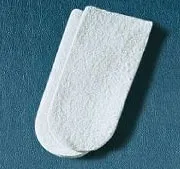Although inexpensive and noninvasive, treatment is ineffective, review concludes
WebMD News from HealthDay

By Steven Reinberg
HealthDay Reporter
TUESDAY, Aug. 20 (HealthDay News) -- Lateral wedge shoe inserts don't appear to relieve pain in patients suffering from osteoarthritis of the knee, a new study finds.
These inexpensive plastic inserts (or insoles) are designed to shift body weight from the inside of the knee to the outside in hopes of reducing pain, but, according to a review of 12 studies, they don't do the job.
"This is a treatment that has been out there for a very long time," said senior study author Dr. David Felson, a professor of medicine and epidemiology at Boston University. "It's reasonably popular and there is data that suggests it works. It's only recently that better controlled trials have been done that haven't found anything."
The inserts are "cheap," he said. "They are a few dollars to maybe $20 or $30. It would be a terrific treatment if it were effective. But the trouble is, it doesn't work."
The report was published Aug. 21 in the Journal of the American Medical Association.
One expert isn't surprised by the findings.
"Orthopedists always thought that these inserts wouldn't make much of a difference," said Dr. Leon Popovitz, an orthopedic surgeon at Lenox Hill Hospital in New York City. "It's good this study ultimately proved it."
Once the arthritis develops to the point where there is uneven pressure in the joint, or uneven wearing in the joint, using shoe inserts or a brace on the knee to balance the pressure will not make a difference, Popovitz said.
As the disease progresses, a variety of treatments are used, he said, such as physical therapy, medications to lubricate the joint, and steroid or platelet-rich plasma injections to try to relieve pain and slow disease progression.
"Pain relief does not cure the problem," Popovitz said. "Ultimately, if the osteoarthritis is significant and advanced, the only cure would be a knee replacement."
Dr. Victor Khabie, co-director of the Orthopedic and Spine Institute and chief of surgery at Northern Westchester Hospital in Mount Kisco, N.Y., said that "as an orthopedic surgeon who treats a lot of arthritis, I have to agree with the finding in this study."
"This is not one of my main go-to treatments for osteoarthritis of the knee," he added. "It is not that helpful or successful."
The lateral wedges are supposed to relieve pain by realigning the angle of the leg so weight is transferred to the outside part of the knee, which typically does not have as much arthritis as the inside part of the knee, Khabie said.
To see whether these shoe inserts were effective, a team lead by Matthew Parkes, a research statistician at the University of Manchester, in England, looked at 12 trials that included a total of 885 patients with osteoarthritis of the knee.
This type of study, called a meta-analysis, is designed to find common patterns among already published studies.
In this case, the researchers found that there seemed to be a small positive effect from the inserts in the studies that included the fewest patients. In the trials that included the largest number of patients and those that compared the wedge inserts with non-angled inserts, there was no benefit from the wedge inserts.
"These findings do not support the use of lateral wedges for this indication," the researchers said.
source : Shoe Inserts Don't Help Arthritic Knee Pain: Study








